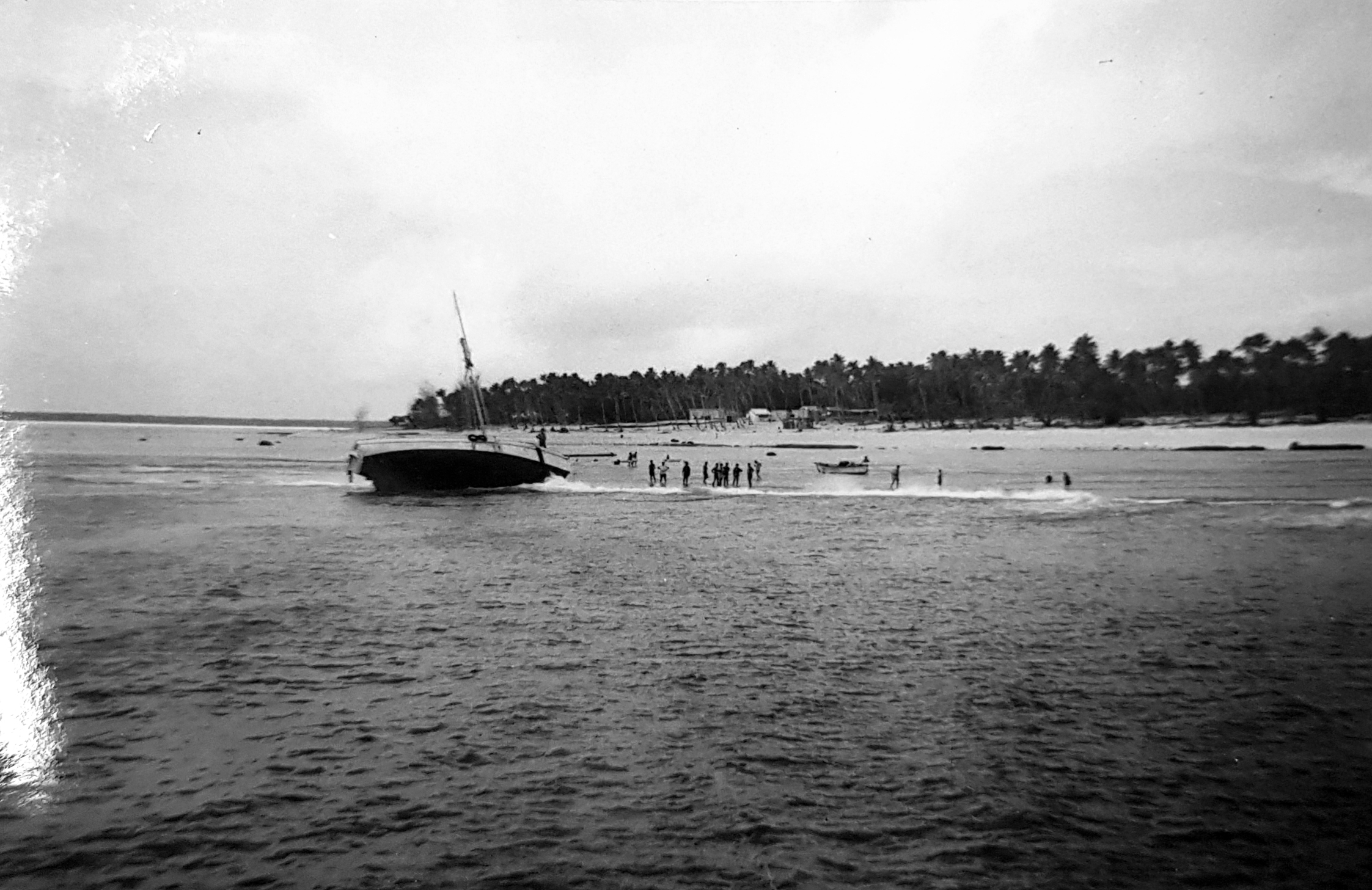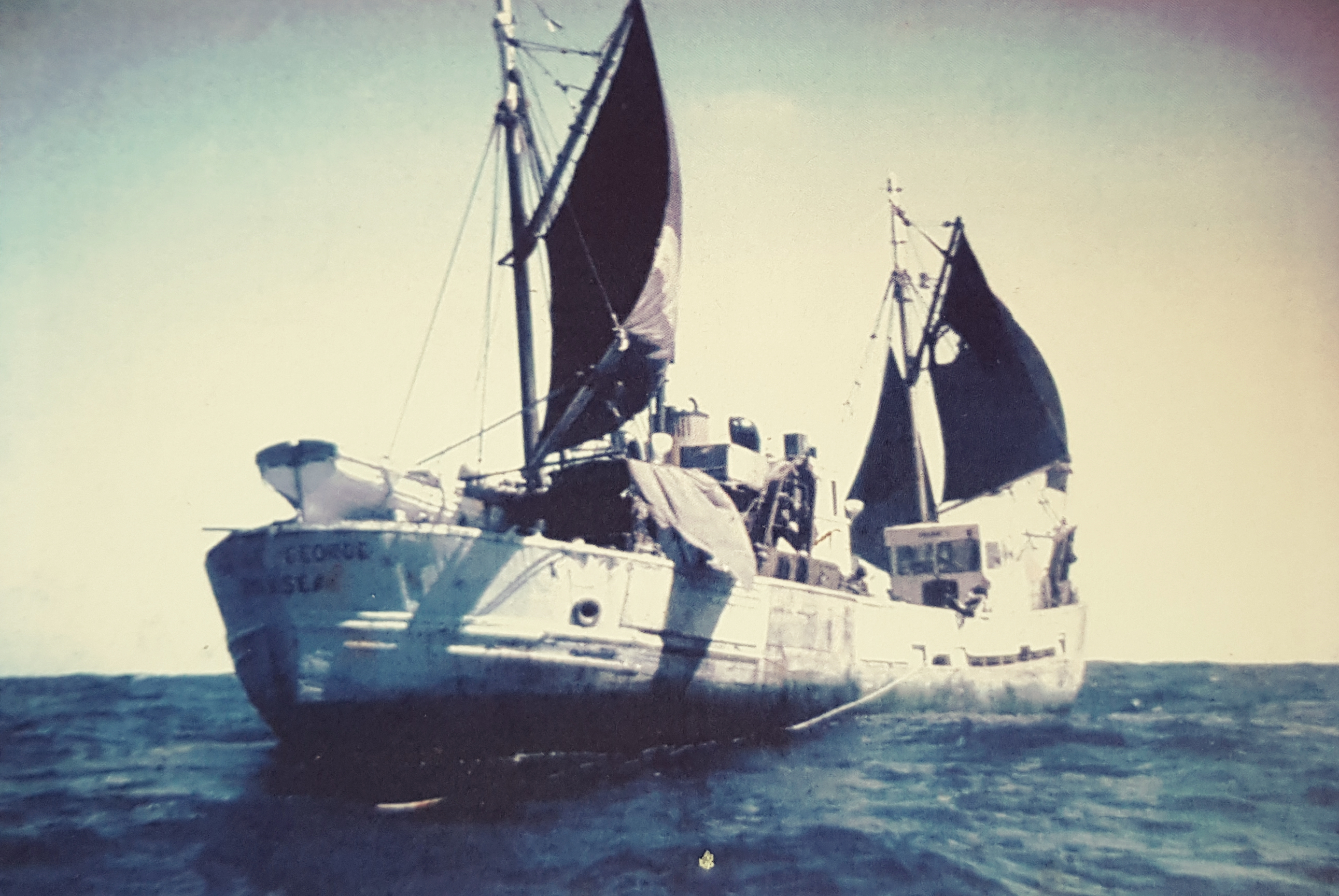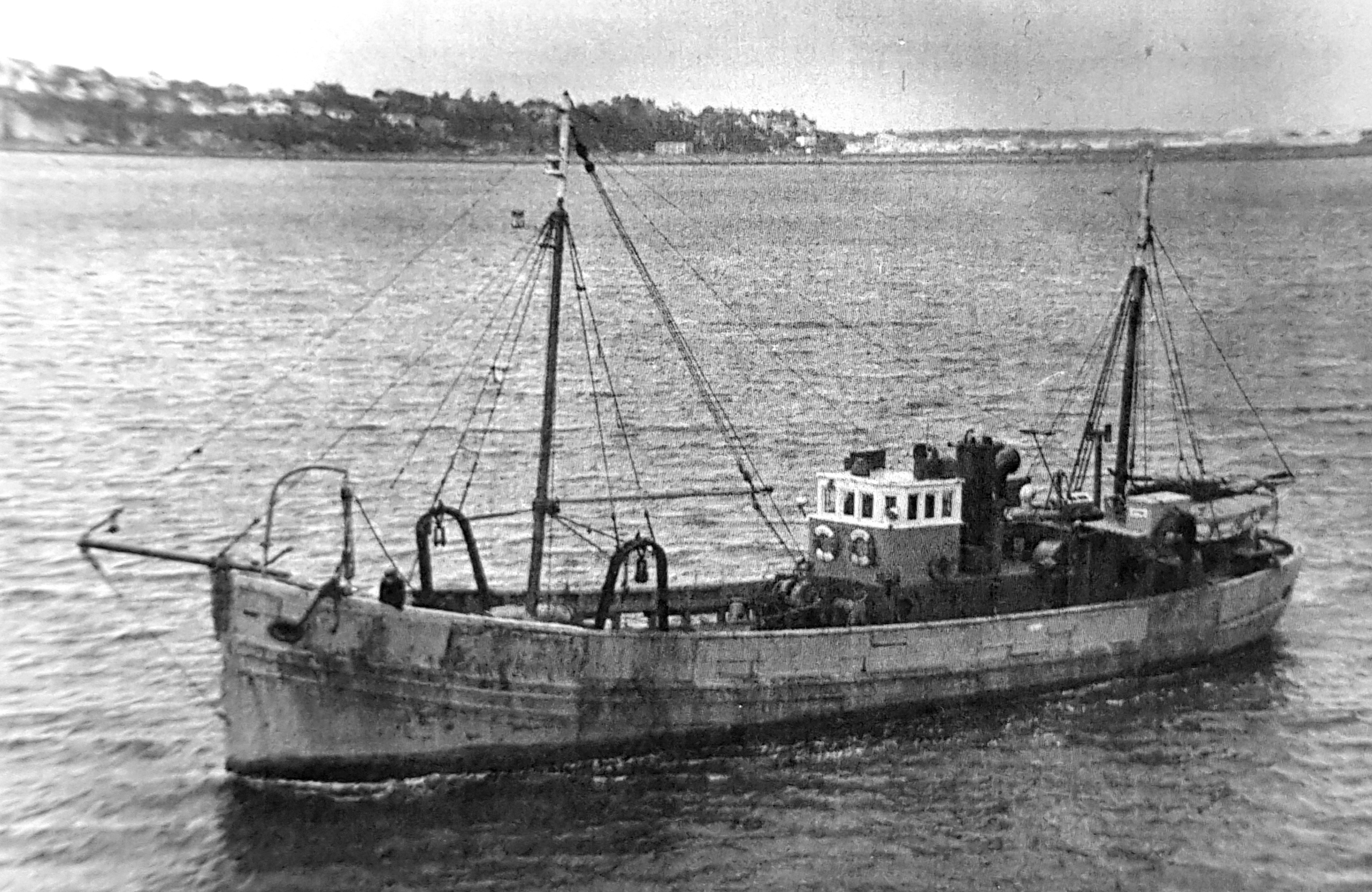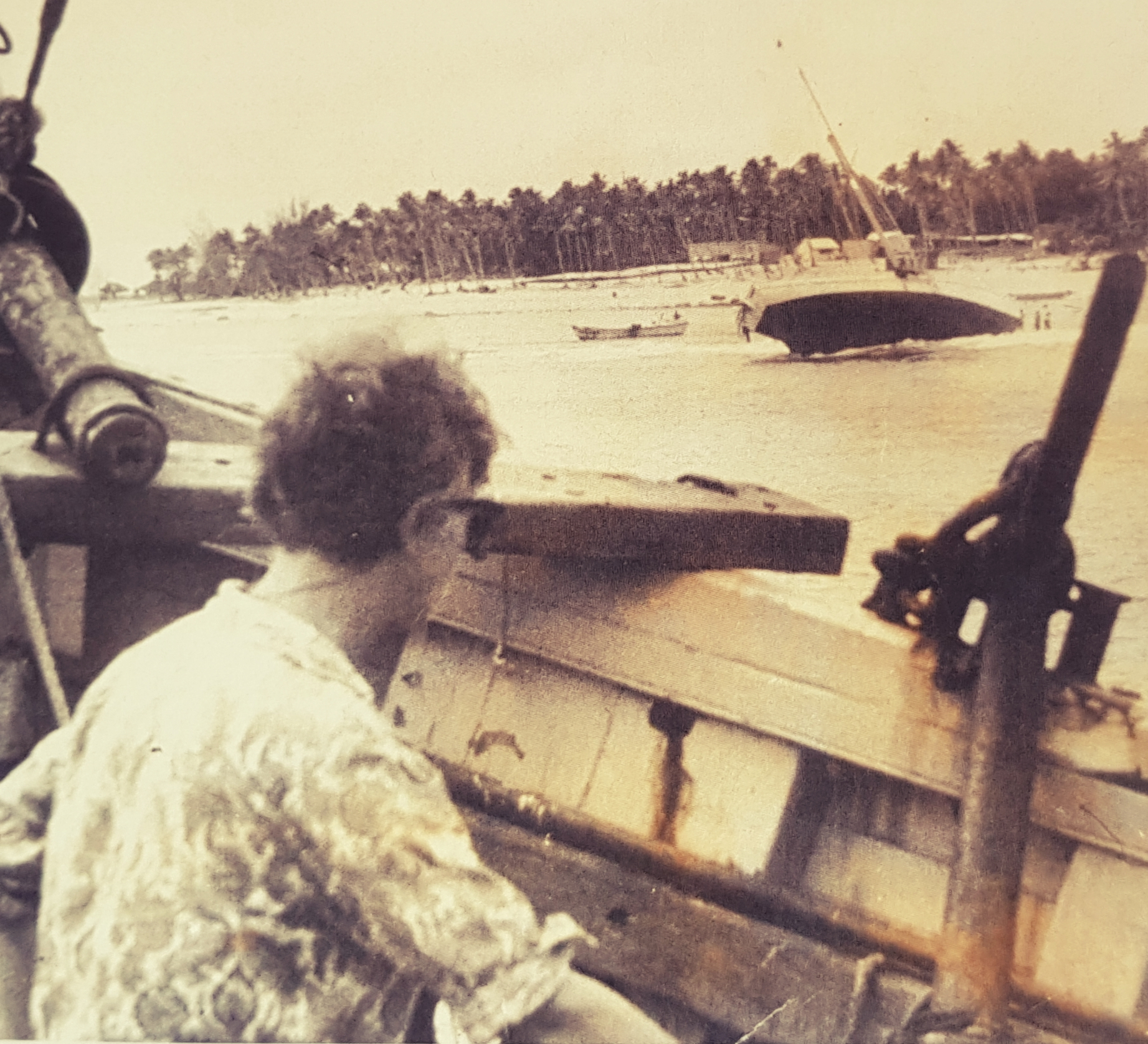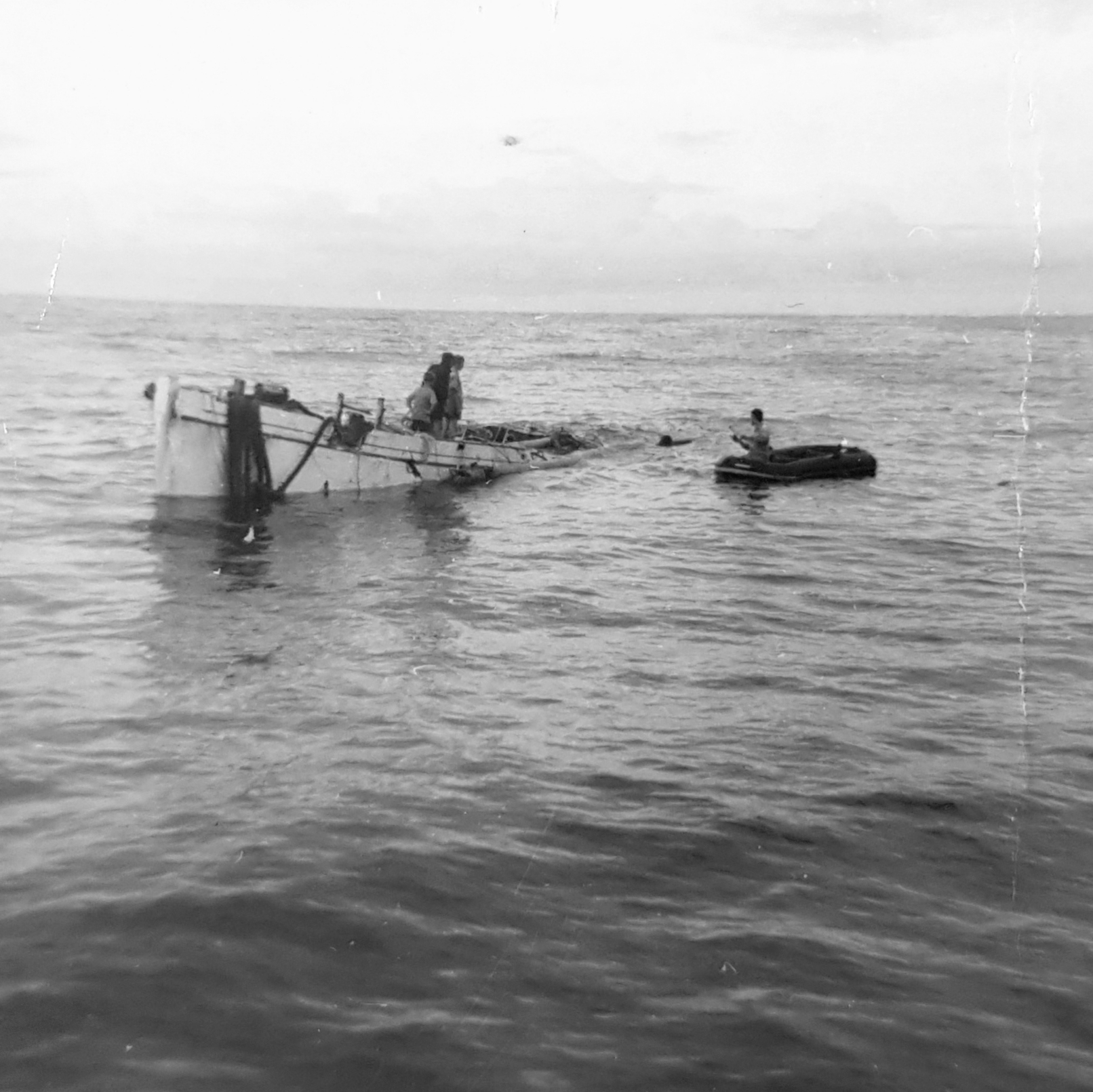by R. A. Andrews.
From Yachting Monthly 1972.
Rounding the Fastnet Rock will bring to the minds of most keen ocean racers of these days memories of tense moments when their winches whirr musically, the alloy boom comes over with a twang to the gybe, the spinnaker is up and taut dimly coloured against the stars maybe, and the lights of a few boats in company are watched intently as the
run downwind begins.
To just a few though it is a different memory. In earlier days the anchor capstan was the only winch abord, manilla sheets purchased and double ended were turned up on the principle of the further forward the sail the further aft its cleat. Six men tailed out down the deck struggling to get a purchase for their feet and swaying their backs to the haul as the main sheet came slowly home, with the weight of heavy spars and 700 sq ft of 15oz cotton sail, it would swing over with a crash that shook the ship. The jackyarders spars were manoevred aloft, and lucky if it all went up without an old Harry Tate of a snarl up. The 47ft ship settled into her stride, 14ft of beam and all of teak she thrust down the winds to the Scillies. 1927 was the year, Tally Ho was the ship and the winner of the race. Those familiar with the Lonsdale Library book Cruising will remember her photograph together with that of her contemporary Jolie Brise.
Forty-three years have now past, Jolie Brise lies afloat in the shadow of the statue of Henry the Navigator in he Belem basin in Lisbon and is maintained with loving care. Tally Ho has fallen on sad days and 11,000 miles away in mid Pacific at Rarotonga in the Cook Islands her wreck is pulled up the ashore in the harbour of Avatui where she is being rebuilt.
I have been able to piece together the story of her loss and salvage, a finely spun web of circumstances which seem improbable but are true.
It started when a man called McLeod left his farm in Dunedin, New Zealand, and with his wife and three children made their way over to Singapore. From their they drove overland in a converted army truck through many countries to arrive in England. There he bought Heather George, a Lowestoft-built 73ft ex MFV with a 300hp Crosely engine. This was then 1967 and they set out from Milford Haven to complete the second part of this unusual circumnavigation.
In June of the same year another New Zealander, Jim Louden, was setting out on a voyage from England to New Zealand with a crew of two in Tally Ho. They crossed the Atlantic in November and for three months chartered in the Caribbean. From then onwards Louden sailed this heavy 47-footer singlehanded.
He reached Rarotonga by late July 1968 and being offered various charters decided to delay his voyage. Ioaba (Job) Marsters, one of the famous family line started by his ancestor William and three Polynesian ???s on Palmerston Island, tried to persuade him to sail him up to Palmerston and give passage down to Rarotonga to his wife and family who were on to New Zealand by steamer. Louden, however, headed on on what may have seemed a quicker return: to sail 120 mile NE to the island of Manuae (Hervey
Islands) and ship back 20 tons of copra, possibly in two voyages. He tried to find a local man to goo with him; Marsters somewhat naturally declined to go, and he succeeded only in signing on a lad as crew.
Tally Ho sailed in fine weather to the offing of Manuae, hove to and waited for dawn. The current while they slept bore them down inexorably towards the island. They awoke to the first shattering crash as she waslifted onto the coral reef by the surf.
A week later aboard Heather George, by this time also at Raratonga, they heard of the wreck and set off to the rescue. A smaller boat had failed to pull Tally Ho off the reef. Seven tons of lead internal ballast had by then been removed and was subsequently sold in New Zealand, her hull was given buoyancy with empty 44 gallon drums, her port side having been stove in amidships, lines were made fast and Heather George pulled. In coming off the reef Tally Ho rolled over and lost her bowsprit and rudder. She floated just awash and was thus, half submerged, towed back to Avatiu harbour and hauled up the beach. She has now been reframed and replanked where necessary, but much remains before she again sets sail under her new owner.
